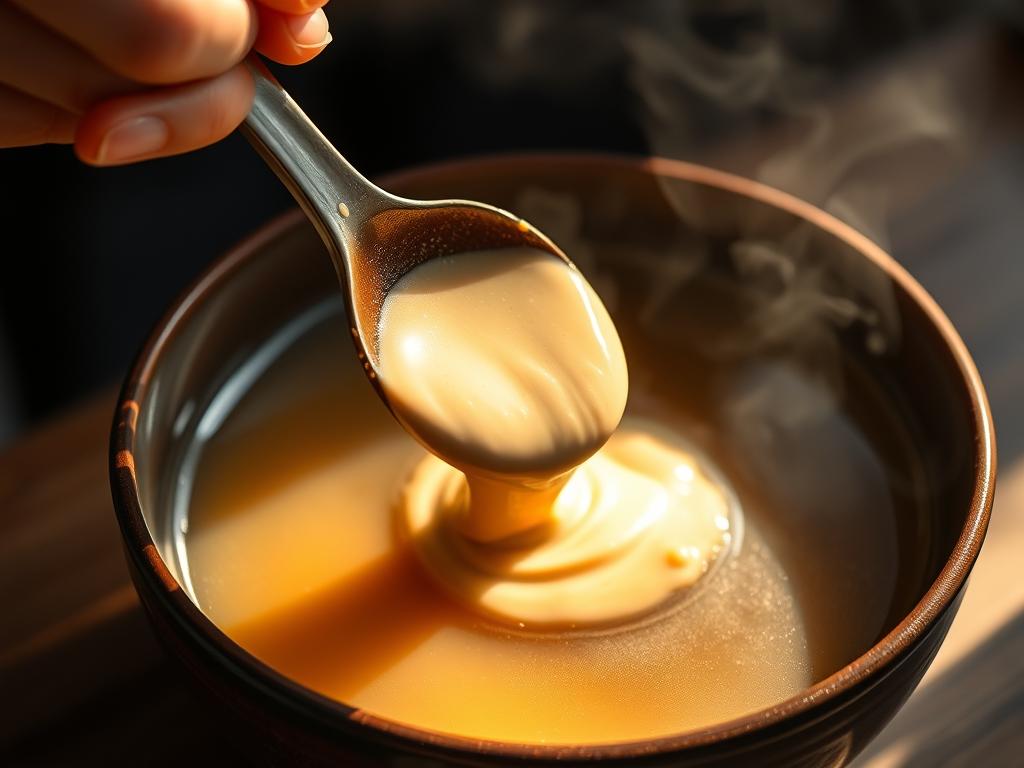How To Prepare Miso Soup From Scratch
Introduction
Miso soup, a cornerstone of Japanese cuisine, is far more than just a simple broth. It’s a comforting, flavorful, and incredibly versatile dish that’s surprisingly easy to make from scratch. This recipe guides you through creating a delicious, authentic miso soup, highlighting the subtle nuances that elevate it from ordinary to extraordinary. Get ready to experience the umami-rich goodness that awaits!
Why You’ll Love This How To Prepare Miso Soup From Scratch
This recipe offers a delicious shortcut to a healthy and satisfying meal. Making miso soup from scratch allows you to control the ingredients, ensuring a fresh, flavorful result free from artificial additives. Plus, it’s incredibly adaptable! You can customize it to your taste preferences with various vegetables, tofu, or even noodles. It’s a perfect weeknight meal or a delightful addition to a larger Japanese spread.
Essential Ingredients for How To Prepare Miso Soup From Scratch
This recipe uses readily available ingredients, but selecting high-quality miso paste is key to a truly delicious soup.
- 4 cups Water
- 4 cups Dashi (Japanese fish stock, or vegetable broth as a substitute)
- 4 tbsp White Miso Paste
- 1/2 cup Silken Tofu, cubed
- 1/4 cup Dried Wakame Seaweed, rehydrated
- 2 Scallions, thinly sliced
Let’s Make How To Prepare Miso Soup From Scratch Together!
Let’s get cooking and savor the simple joy of homemade miso soup!
You Must Know Before You Start
The most crucial step is to avoid boiling the miso paste. The high heat destroys its beneficial enzymes and delicate flavors. Always add the miso paste to the already-heated broth, stirring gently until dissolved.
Add Your Touch (Variations & Customizations)
Feel free to experiment and personalize your miso soup!
- Add Mushrooms: Shiitake or enoki mushrooms add an earthy depth of flavor.
- Spice it up: A pinch of red pepper flakes adds a subtle kick.
- Add greens: Spinach or bok choy wilted into the soup adds nutrients and color.
- Protein boost: Cooked shrimp or chicken can be added for a heartier soup.
Instructions
- In a medium saucepan, combine the water and dashi. Heat over medium heat until simmering but not boiling.
- Remove from heat. In a small bowl, whisk a small amount of the hot broth into the miso paste to create a smooth paste. This prevents lumps from forming.
- Gradually whisk the miso paste mixture into the remaining broth in the saucepan, ensuring it is well combined. Do not boil.
- Add the rehydrated wakame, cubed tofu, and scallions to the soup. Stir gently to combine.
- Serve immediately in warmed bowls.
Chef’s Helpful Tips for Perfect How To Prepare Miso Soup From Scratch
For the best results, use freshly made dashi and high-quality miso paste. Store leftover soup in the refrigerator for up to 3 days. Garnish with extra scallions or a sprinkle of sesame seeds before serving for an elegant touch.
- Taste and adjust seasoning as needed.
- Use a wooden spoon or spatula to avoid scratching your pot.
Nutrition Facts (Approximate)
Please note: Nutritional information is an estimate and can vary based on ingredients and serving size.
- Serving Size: 1 bowl
- Calories: 150 kcal
- Protein: 7g
- Fat: 5g
- Carbohydrates: 18g
This recipe is a good source of probiotics and is naturally low in fat.
Frequently Asked Questions (FAQ)
- Can I use different types of miso paste?
- Yes! Different miso pastes (white, red, awase) offer unique flavor profiles. Experiment to find your favorite.
- What if I don’t have dashi?
- Vegetable broth makes an excellent substitute for dashi. You can also use water, but the flavor will be less rich.
- Can I make this soup ahead of time?
- It’s best to make miso soup fresh, as the flavor can diminish over time. However, you can prepare the dashi and vegetables in advance.






